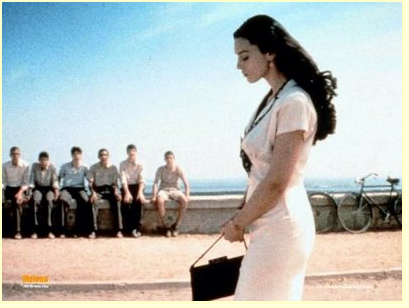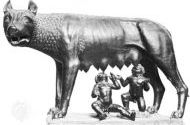Sicily’s History - an “Eternal Reoccurrence”
Sicily’s History - an “Eternal Reoccurrence”
(September 24, 2009)
Sicily’s beauty - all eyes rivet upon her. All wanted to possess her.
They came to possess Sicily from the East (Greeks: Ancient & Orthodox); South (Phoenicians & Arabs); West (Spain) and North (Rome, France & Piedmont)…Next?
The renown 19th century historian and classical scholar Edward A. Freeman, in an 1879 essay “Sicilian Cycles”, defined “Historical Cycles” as “events that seem to reproduce themselves in the history of the same nation…It is a return on the part of a country to the state of things essentially the same as a state of things many ages older.”
He went on to write: “The history of Sicily is a series of cycles…there is no European country where events have repeated themselves in so remarkable a way as they have done in Sicily…The repetition is so exact that it almost passes the stage of parallelism and reaches that of identity.” Further: “The history of Sicily is wholly misunderstood if it is taken, as it often is, for merely part of the history of Italy.” (Historical Essays; Macmillan, 1879).
Specifically, Freeman is referring to the history of the repeated attempts of European, Middle Eastern and North African powers to possess the magnificent and incomparable island of Sicily.
At the dawn of the 1st millennium BC the Phoenicians, a Middle Eastern people, reaching out from their colonies in North Africa, began to settle in western Sicily. In the 8th century BC, the Greeks began to arrive on the east coast. Syracuse was the main Greek city and present day Palermo was founded by the Phoenicians. As each expanded, the indigenous Latin speaking people Sicels were pushed into the mountains and to the northern shore. (Note: The historian A. J. Toynbee argued that some Sicels pushed out of Sicily were the founders of Rome. See link “Sicilian Lights on Roman Origins).
The Greeks and Phoenicians expanded to the point that they came into conflict leading to war. The Phoenicians sacked the Greek city Akragas (present day Agrigento) and the Greeks under the leadership of Agathokles carried the war to Africa attacking Phoenician cities.
Finally, out of Italy the Romans came defeating both the Greeks and Phoenicans taking possession of all of Sicily. Ironically, à la Toynbee’s argument, Freeman observes: “Sicily came into closes connexion with Italy under the rule of a city whose first settlers were most likely closely akin to her own Sicels.” (Could it be that the Romans coming to Sicily were de facto avenging their Sicilian progenitors? A fascinating thought!) From Sicilian bases, the Romans took the war to the Phoenicians destroying their capital city Carthage and taking control of North Africa.
After the fall of the Roman Empire, heirs to the ancient Greeks, the Eastern Greek Orthodox Empire, again returned to Sicily. Also, Middle Eastern Arabs, like Middle Eastern Phoenician predecessors, again colonized North Africa and Sicily. Again, war broke out between Greeks and Middle Easterner/North Africans; and, again Sicily was the main battleground. And, again a force came out of Italy to settle the issue. The Normans took control of Sicily, as the Romans did before them. And, as the Romans before them, the Normans again used Sicily as a base to attack North Africa.
The Norman possession of Sicily eventually gave way to various European monarchies: Austrian, French, and Spanish. In 1860, again a force came out of Italy to take possession of Sicily - the Northern Italian Piedmontians. Sicily was forcefully unified with the rest of Piedmont controlled Italy.
Again, like the Romans and the Normans, after taking possession of Sicily the Piedmontian Italian Prime Minister Giovanni Giolitti used Sicily as a base to attack and colonize Middle East Turkey’s North African possession (Italo-Turkish War 1911).
DISCLAIMER: Posts published in i-Italy are intended to stimulate a debate in the Italian and Italian-American Community and sometimes deal with controversial issues. The Editors are not responsible for, nor necessarily in agreement with the views presented by individual contributors.
© ALL RIGHTS RESERVED - RIPRODUZIONE VIETATA.This work may not be reproduced, in whole or in part, without prior written permission.
Questo lavoro non può essere riprodotto, in tutto o in parte, senza permesso scritto.
Add a comment






